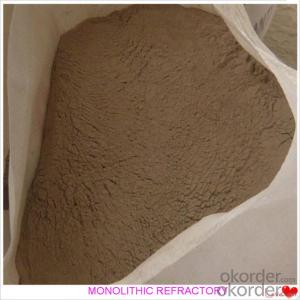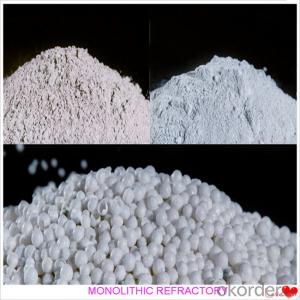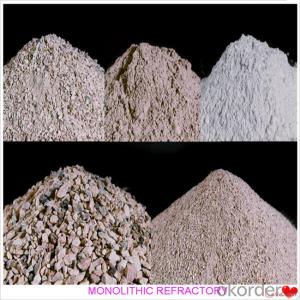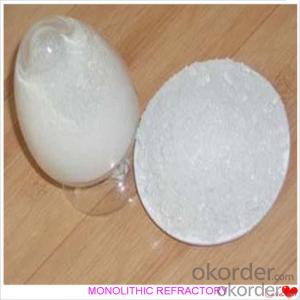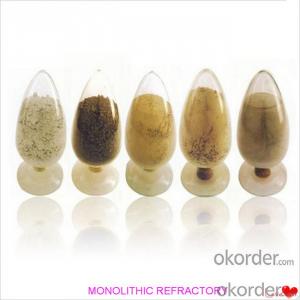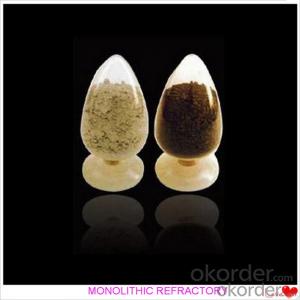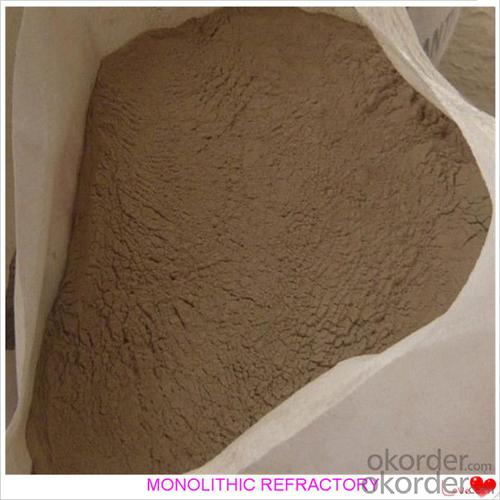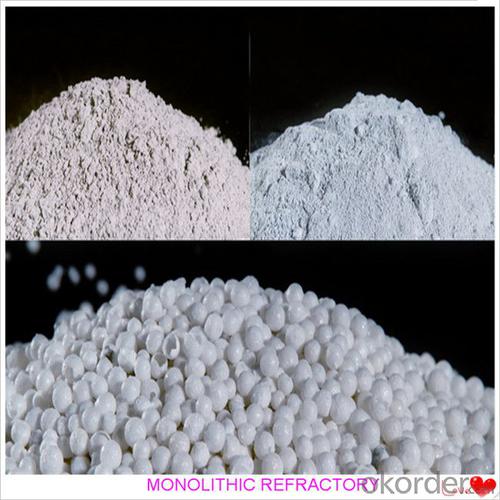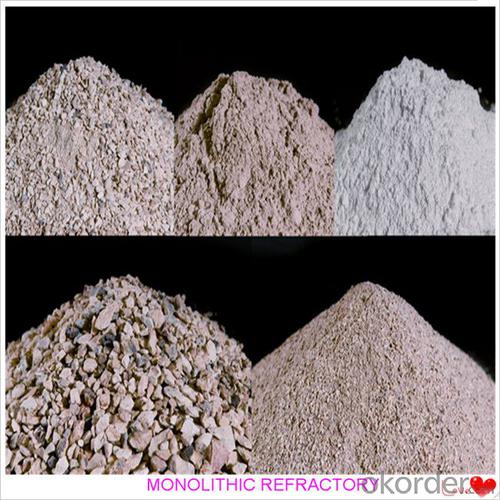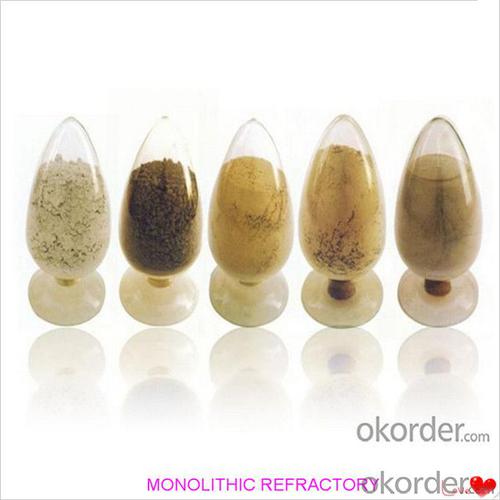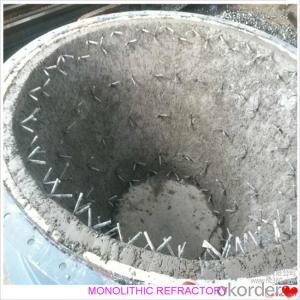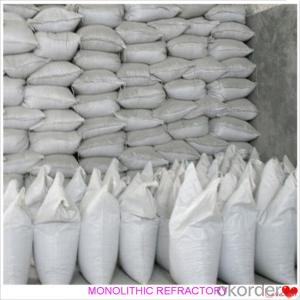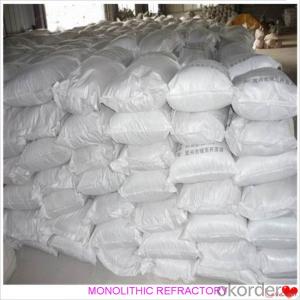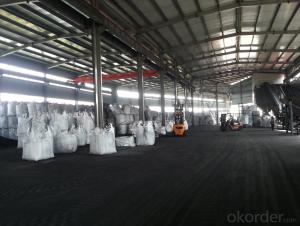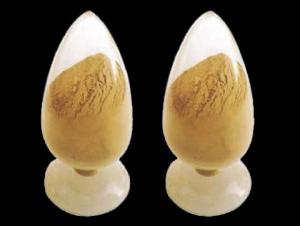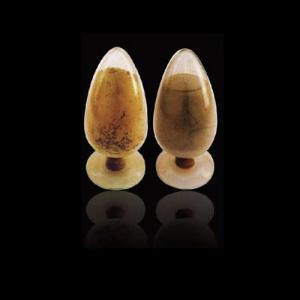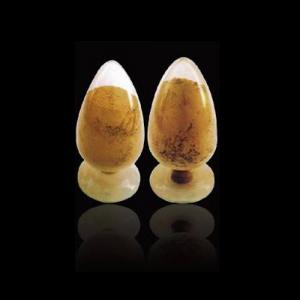Monolithic Refractories for Iron and Steel Industry - Ceramic Fiber Castable for Fireplace and Industrial Furnace
- Loading Port:
- China main port
- Payment Terms:
- TT or LC
- Min Order Qty:
- 1000 kg
- Supply Capability:
- 3000000 kg/month
OKorder Service Pledge
OKorder Financial Service
You Might Also Like
Ceramic Fiber Castable For Fireplaces and Industrial Furnaces
Product Description:
Ceramic fiber castable is manufactured according to international standards. The product is famous for its excellent abrasion resistance and low thermal conductivity. Further, these can be provided in different specifications as required by clients. Castables use high purity raw materials and additives as the main material, and are made with superfine powder adding technology.
Product Features:
The material has excellent structural stability and air tightness, and has high physical and chemical properties, and also excellent working ability. If should be used with the same material products.
Product Applications:
Widely used in various kiln linings, such as boilers, blast furnace hot blast stoves, heating furnaces, ceramic kilns, heat treatment furnaces, incinerators, re-circulating fluidized bed furnaces and chemical industry and construction industry furnaces.
Product Specifications:
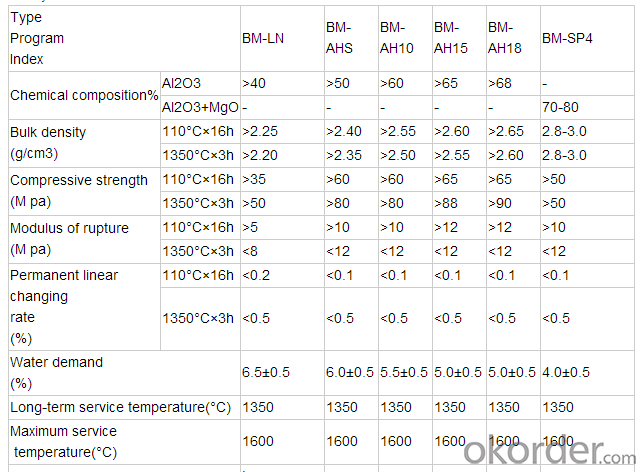
Product Images:
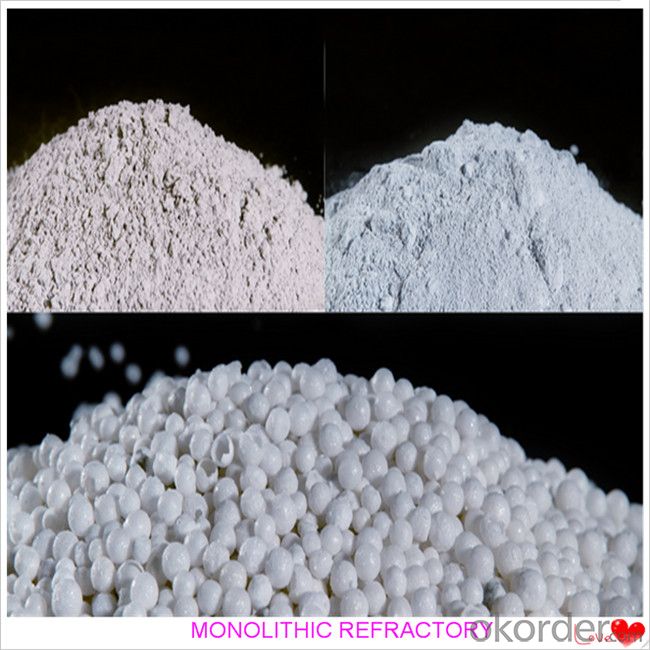
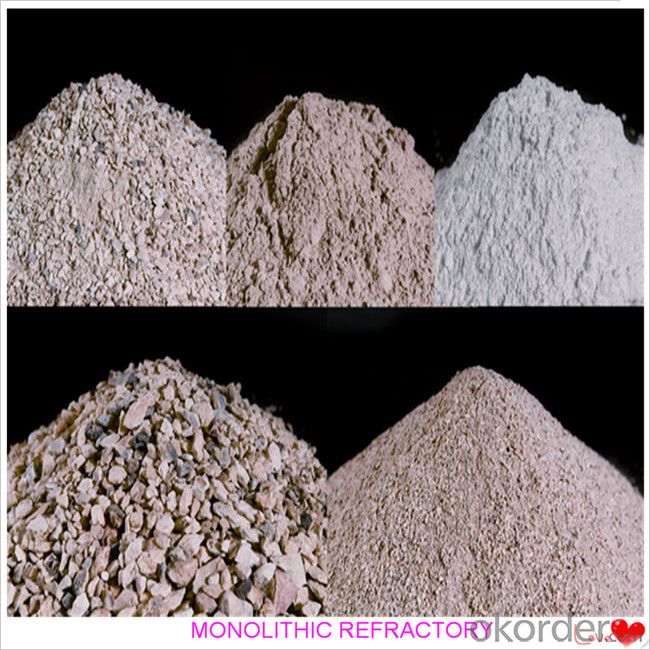
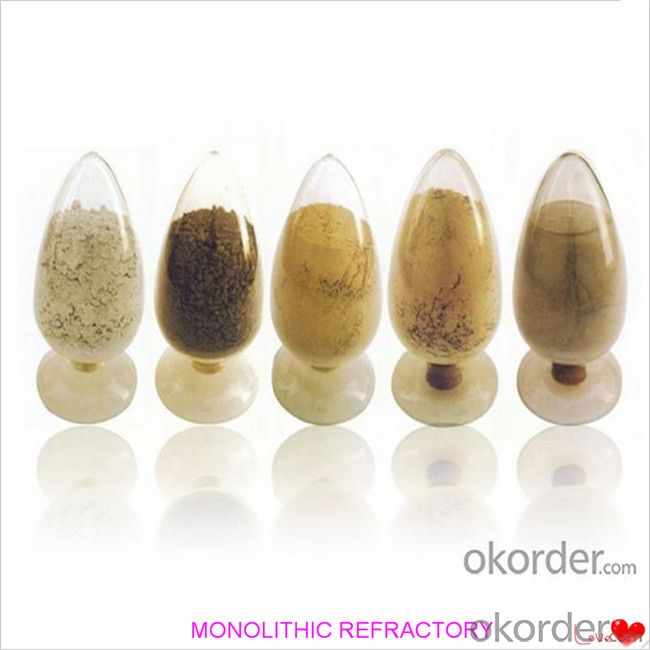
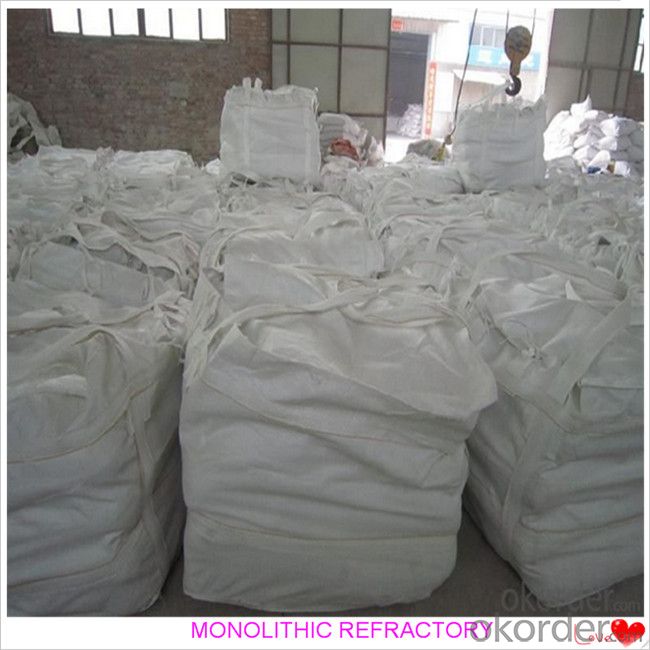
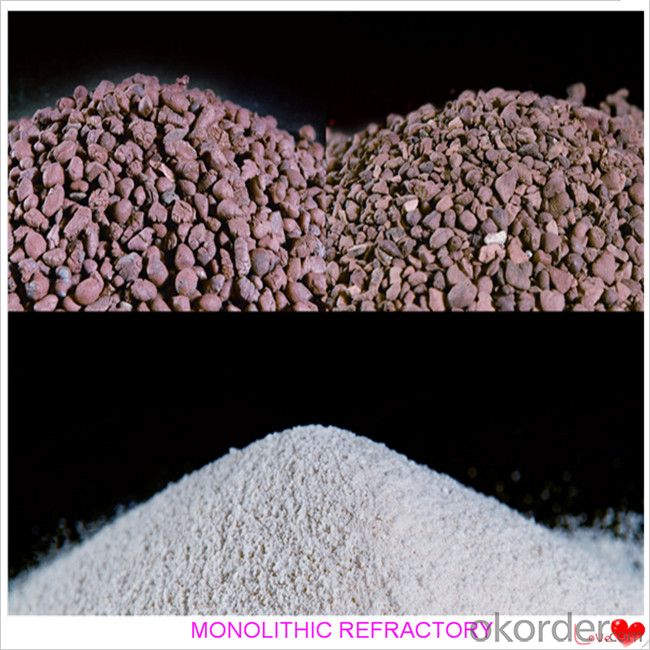
FAQ:
Q1: Why buy Materials & Equipment from OKorder.com?
A1: All products offered by OKorder.com are carefully selected from China's most reliable manufacturing enterprises. Through its ISO certifications, OKorder.com adheres to the highest standards and a commitment to supply chain safety and customer satisfaction.
Q2: How do we guarantee the quality of our products?
A2: We have established an advanced quality management system which conducts strict quality tests at every step, from raw materials to the final product. At the same time, we provide extensive follow-up service assurances as required.
- Q: How do monolithic refractories impact the quality of iron and steel products?
- Monolithic refractories play a crucial role in enhancing the quality of iron and steel products. These refractories are used to line the furnaces, ladles, and other equipment involved in the production process. By providing excellent thermal insulation and resistance to high temperatures, monolithic refractories help maintain stable and controlled heating conditions, which is essential for achieving desired chemical compositions and microstructures in iron and steel. Moreover, these refractories minimize heat loss, prevent contamination, and reduce the formation of impurities, thus ensuring the production of high-quality and defect-free iron and steel products.
- Q: How do monolithic refractories withstand the chemical attacks in copper smelting applications?
- Monolithic refractories are able to withstand chemical attacks in copper smelting applications due to their unique composition and properties. These refractories are typically made from high-purity materials such as alumina, silica, or magnesia, which have excellent resistance to chemical reactions. Additionally, they are designed to have low porosity and high density, minimizing the penetration of corrosive substances into the refractory material. The monolithic nature of these refractories also eliminates joints and seams, reducing the chances of chemical attack. Overall, the combination of the refractory's composition, low porosity, and monolithic structure enables them to withstand the harsh chemical environment of copper smelting applications.
- Q: What are the common manufacturing processes used for monolithic refractories?
- Monolithic refractories are commonly manufactured using the following processes: 1. Mixing: The initial step involves accurately measuring and combining the raw materials to create a uniform mixture. 2. Wetting: The mixture is then moistened with water or a liquid binder to enhance its workability and plasticity, facilitating shaping and molding. 3. Forming: Various techniques such as casting, gunning, ramming, or extrusion are employed to shape the wet mixture. Casting entails pouring it into a mold, gunning involves spraying it onto a surface, ramming compacts it using a tool, and extrusion forces it through a die to create specific shapes. 4. Drying: The formed monolithic refractory is dried in a controlled environment with specific temperature and humidity conditions to eliminate excess moisture, preventing cracks or warping. 5. Firing: The dried monolithic refractory is then subjected to high temperatures to achieve the desired properties. This process, known as sintering, promotes particle bonding, increasing the material's strength and stability. 6. Finishing: Following the firing process, additional finishing processes like grinding, polishing, or coating may be employed to enhance the surface quality and overall performance of the monolithic refractory. By employing these standard manufacturing procedures, high-quality monolithic refractories with consistent properties and performance characteristics are produced.
- Q: How do monolithic refractories improve the efficiency of reheating furnaces in steel plants?
- Monolithic refractories play a crucial role in improving the efficiency of reheating furnaces in steel plants. These refractories are specially designed to withstand high temperatures and harsh operating conditions, making them ideal for use in steel plants. One of the key ways in which monolithic refractories enhance furnace efficiency is by reducing heat loss. These refractories have excellent insulation properties, which help to minimize heat transfer from the furnace to its surroundings. As a result, less energy is wasted, and the furnace can maintain its desired temperature more efficiently. Additionally, monolithic refractories contribute to a more uniform and controlled heat distribution within the furnace. They can be easily shaped and installed to create a seamless lining, ensuring that heat is evenly distributed throughout the furnace chamber. This uniform heat distribution prevents hotspots and cold spots, leading to a more efficient heating process. Monolithic refractories also play a crucial role in minimizing downtime and maintenance requirements. Unlike traditional brick linings, which are prone to cracking and erosion, monolithic refractories offer superior resistance to wear and tear. This enhanced durability reduces the need for frequent repairs and replacements, allowing for uninterrupted furnace operation and increased overall efficiency. Furthermore, monolithic refractories contribute to improved energy efficiency by reducing fuel consumption. The superior insulation properties of these refractories help to retain heat within the furnace, reducing the amount of energy required to maintain the desired temperature. This leads to significant energy savings for steel plants, as less fuel is needed to achieve the same heating results. In conclusion, monolithic refractories significantly improve the efficiency of reheating furnaces in steel plants by reducing heat loss, ensuring uniform heat distribution, minimizing downtime and maintenance, and reducing fuel consumption. By incorporating these refractories into their furnace linings, steel plants can enhance their productivity, reduce energy costs, and improve the overall efficiency of their operations.
- Q: How do monolithic refractories help in reducing energy consumption in iron and steel production?
- Monolithic refractories help in reducing energy consumption in iron and steel production by providing efficient insulation and heat retention properties. These refractories have low thermal conductivity, which minimizes heat loss and ensures that the generated heat is effectively utilized for the production processes. Their high refractoriness allows them to withstand extreme temperatures, reducing the need for frequent repairs or replacements that would require additional energy consumption. Additionally, monolithic refractories offer better resistance to thermal shock, which prevents thermal stress-induced cracks and extends their lifespan. Overall, the use of monolithic refractories in iron and steel production aids in optimizing energy usage and improving overall energy efficiency.
- Q: What are the typical operating temperatures for monolithic refractories?
- The specific composition and type of refractory material determine the typical operating temperatures for monolithic refractories. Generally, these refractories are designed to endure high temperatures ranging from 1500°C (2732°F) to 1800°C (3272°F) and sometimes even higher. Industries such as steelmaking, cement production, glass manufacturing, and petrochemical processing commonly utilize these refractories, subjecting them to extreme thermal conditions. Temperature limits vary for different types of monolithic refractories. For example, basic refractories made of magnesia or dolomite can withstand temperatures up to 1800°C (3272°F). Conversely, alumina-based refractories typically handle temperatures up to 1700°C (3092°F). Silicon carbide-based refractories exhibit even higher temperature resistance, with the capacity to endure temperatures exceeding 2000°C (3632°F). Choosing the appropriate monolithic refractory material is crucial, considering the specific operating temperature requirements of the application. Using refractories beyond their recommended temperature limits may result in thermal shock, spalling, reduced performance, equipment failure, or safety hazards. Therefore, it is essential to consult with refractory manufacturers or experts in the field to ensure the correct selection and optimal performance of monolithic refractories in high-temperature applications.
- Q: How do monolithic refractories enhance the performance of ladle and tundish preheating systems?
- Monolithic refractories enhance the performance of ladle and tundish preheating systems by providing excellent thermal insulation, high mechanical strength, and resistance to corrosion and erosion. This allows for efficient heat retention and distribution, ensuring uniform and consistent preheating of ladles and tundishes. Additionally, monolithic refractories minimize heat losses, reduce energy consumption, and increase the lifespan of the preheating systems, contributing to improved overall performance.
- Q: How do monolithic refractories withstand chemical attack from molten metals and slag?
- Monolithic refractories withstand chemical attack from molten metals and slag due to their unique composition and properties. These refractories are made of a single, homogeneous material, which provides them with better resistance against chemical corrosion. Additionally, monolithic refractories are designed to have low porosity and high density, which limits the penetration of molten metals and slag into their structure. These materials also have high melting points, enabling them to withstand the extreme temperatures present in industrial processes. Overall, the combination of their composition, low porosity, high density, and high melting points makes monolithic refractories highly resistant to chemical attack from molten metals and slag.
- Q: How do monolithic refractories contribute to energy efficiency in iron and steel manufacturing?
- Monolithic refractories contribute to energy efficiency in iron and steel manufacturing through their superior insulation properties and ability to withstand high temperatures. These refractories minimize heat loss, reducing the energy required for heating and maintaining the desired temperature in the manufacturing process. Additionally, their durability and resistance to thermal shock help to extend the lifespan of furnaces and other equipment, reducing the need for frequent repairs or replacements, further enhancing energy efficiency.
- Q: What are the advantages of using self-flow castables in the iron and steel industry?
- Self-flow castables bring numerous benefits to the iron and steel industry. Firstly, their exceptional flowability allows for easy filling of intricate molds and complex shapes, enabling the creation of more precise and detailed components. Moreover, this high flowability ensures a flawless casting without any gaps or voids, resulting in a superior product with enhanced mechanical properties. Secondly, self-flow castables possess a remarkable degree of homogeneity, guaranteeing consistent properties throughout the casting. This uniformity is crucial in the iron and steel industry, where achieving desired performance characteristics relies heavily on a consistent composition. Additionally, self-flow castables exhibit a low water demand, reducing drying and curing times. This efficiency translates into faster casting cycles and shorter overall production times. Furthermore, the reduced water demand minimizes drying shrinkage, decreasing the risk of cracking or distortion during the curing process. Another notable advantage of self-flow castables is their excellent resistance to thermal shock. This characteristic is particularly valuable in the iron and steel industry, where extreme temperatures are commonplace. The ability to withstand rapid and drastic temperature changes without cracking ensures the longevity and durability of cast components. Furthermore, self-flow castables demonstrate superior abrasion resistance, making them ideal for applications where castings are exposed to abrasive materials or environments. Their resistance to wear and tear prolongs the service life of the castings, reducing the need for frequent repairs or replacements. In conclusion, self-flow castables offer exceptional flowability, high homogeneity, low water demand, excellent thermal shock resistance, and robust abrasion resistance. These advantages lead to improved casting quality, increased production efficiency, enhanced durability, and reduced maintenance costs in the iron and steel industry.
Send your message to us
Monolithic Refractories for Iron and Steel Industry - Ceramic Fiber Castable for Fireplace and Industrial Furnace
- Loading Port:
- China main port
- Payment Terms:
- TT or LC
- Min Order Qty:
- 1000 kg
- Supply Capability:
- 3000000 kg/month
OKorder Service Pledge
OKorder Financial Service
Similar products
Hot products
Hot Searches
Related keywords
